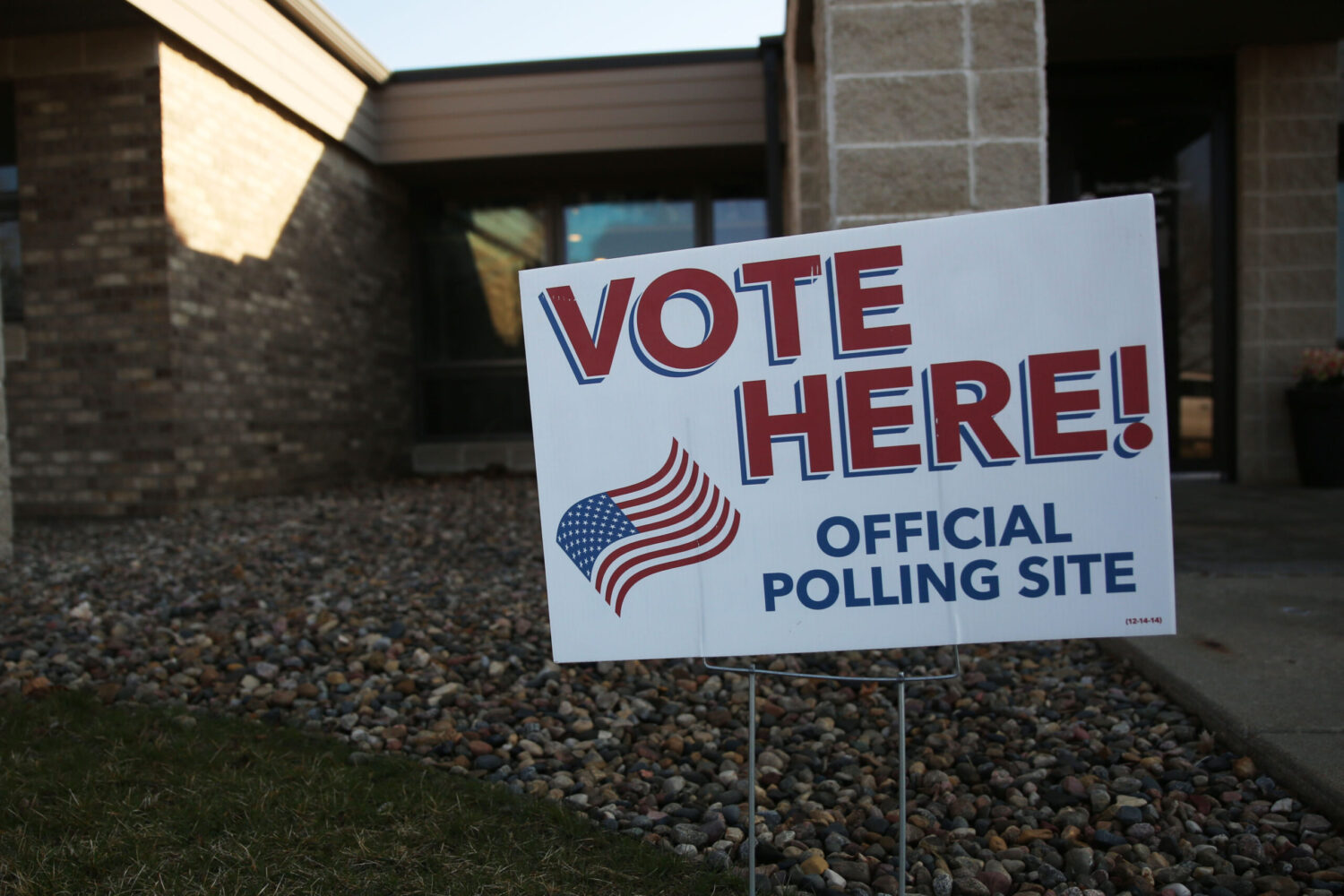
South Dakota Searchlight
It’s primary day in South Dakota, with 45 legislative contests receiving much of the attention and various local races and issues also appearing on ballots around the state.
Here’s what to know about casting your vote and what’s on the ballot.
Who can vote
Voters who registered by the May 20 deadline are eligible to cast a ballot.
The Democratic Party allows Democrats, independents and voters with no political affiliation to vote in Democratic primary races. Republican primary races are open only to voters registered as Republican. Voters who have no political races on their ballot may still have a local nonpartisan office (such as a school board race) or a local ballot question to vote on.
There are approximately 600,000 registered voters in the state, including about 305,000 Republicans, 151,000 voters registered as independent or non-politically affiliated, and 144,000 Democrats. Turnout in the last four primary elections ranged from 22% to 32% of registered voters.
When to vote
Polls are open from 7 a.m. to 7 p.m. local time.
Where to vote and what’s on your ballot
Find your polling place and view a sample ballot by visiting the state’s Voter Information Portal at vip.sdsos.gov/VIPLogin.aspx.
Acceptable forms of required ID
Voters are required to show a South Dakota driver’s license, a non-driver identification card, a U.S. government photo ID (such as a passport), a tribal ID or a student ID card issued by a high school or college in South Dakota. Voters who forget to bring an acceptable ID can sign a personal affidavit attesting to their identity.
Where to find official results
After the polls close and county auditors begin tallying votes, the Secretary of State’s Office will publish live results tonight at sdsos.gov.
Legislative primaries
The state Legislature includes 105 members who meet annually at the Capitol in Pierre. Candidates in legislative primary elections are trying to advance to the Nov. 5 general election.
In state House primaries, the top two finishers in each party advance — except in a few “split” House districts (which are designated by the addition of a letter, such as District 26A). In split districts, one winner from each party advances.
In state Senate primaries, only the top finisher in each party advances.
There’s just one Democratic legislative primary today. It pits Red Dawn Foster, a state senator from Pine Ridge who is seeking reelection, against Gerald Cournoyer Jr., of Kyle. They’re running in District 27, which includes land in Bennett, Jackson, Pennington and Oglala Lakota counties.
There are 44 Republican legislative primaries, featuring representatives of the party’s rival factions. Among the many races to watch:
- Spencer Gosch, a former speaker of the House, is attempting a comeback in a three-way primary against incumbents Scott Moore and James Wangsness in District 23 (which includes a broad area of north-central South Dakota).
- A six-way primary in District 30 (the southwest corner of the state and part of the Black Hills) includes incumbent Rep. Trish Ladner and former legislator Tim Goodwin.
- A three-way Senate primary in District 30 pits challengers Amber Hulse and Forrest Foster against incumbent Sen. Julie Frye-Mueller, who was censured by the Senate last year for alleged verbal harassment of a legislative staffer with comments including an anti-vaccine rant.
- Two current state representatives — Fred Deutsch and Stephanie Sauder — are vying for one Senate nomination in District 4 (Watertown and the immediate vicinity).
- A leader in the movement to switch from ballot tabulation machines to hand counting, Rick Weible, is challenging Senate Majority Leader Casey Crabtree in District 8 (in Brookings, Kingsbury, Lake and Miner counties).
Presidential primary race
Nobody filed to run against former President Donald Trump in South Dakota’s Republican presidential primary, so it’s not on the ballot.
Several candidates filed to run against Democratic President Joe Biden. So although Biden’s nomination by the national party is not in doubt, the contest will be on the ballot for Democrats and for independents and non-politically affiliated voters who wish to vote in the Democratic primary.
In addition to Biden, the candidates are U.S. Rep. Dean Phillips, of Minnesota, who withdrew from the race too late for his name to be removed from the ballot, along with author and speaker Marianne Williamson, of Washington, D.C.., and educator Armando Perez-Serrato, of California.
Political party positions
Voters who are registered as Republicans may see a race on their ballot for delegates to the state party convention.
This year’s convention is just days after the primary election, Thursday through Saturday in Pierre. The main item of business is the selection, by delegates, of a nominee for a Public Utilities Commission seat. That’s the seat currently held by Republican Kristie Fiegen, who is seeking the nomination to run for another term in the Nov. 5 general election.
Republican voters may also have a race on their ballot for a precinct committeeman or precinct committeewoman. People selected for those positions work with their county party chairperson on activities such as campaigning for Republicans in their precincts, get-out-the-vote efforts and registering voters.
Local races and issues
Voters may see a variety of local races on their ballot, such as primaries for county commissioners, state’s attorneys, county coroners and county treasurers.
Voters could also see races for nonpartisan local boards, such as school boards and water development districts.
Some voters also have local ballot questions to consider, such as Gregory, Haakon and Tripp counties, where voters will consider initiatives to ban tabulation machines and require hand counting for future election results (statewide ballot questions, such a proposed abortion-rights measure, will be on the ballot in the Nov. 5 general election).
